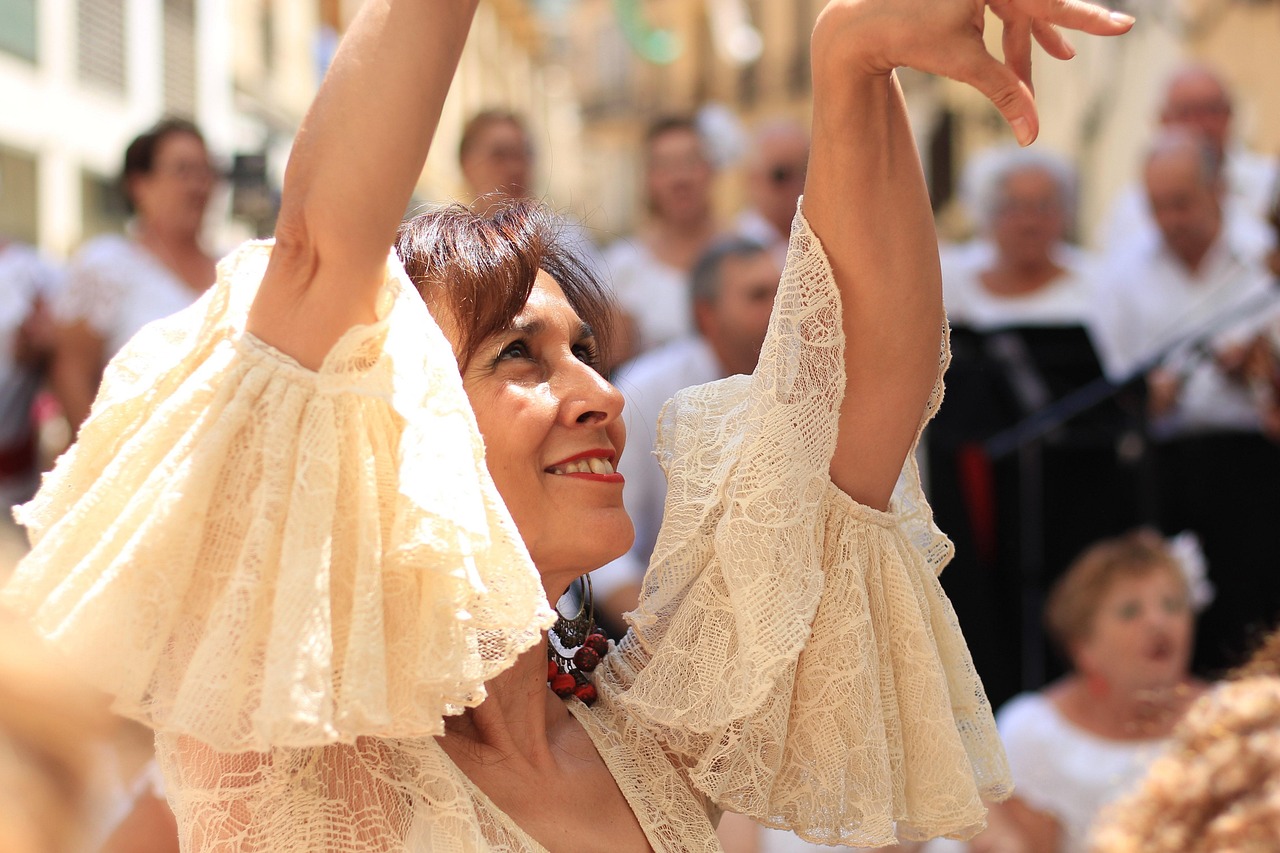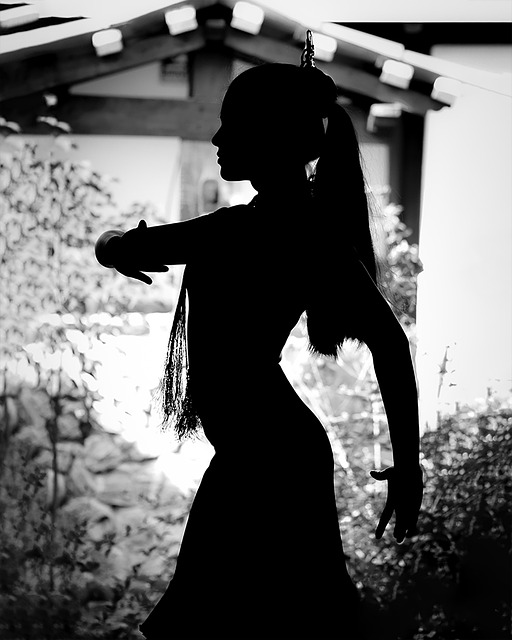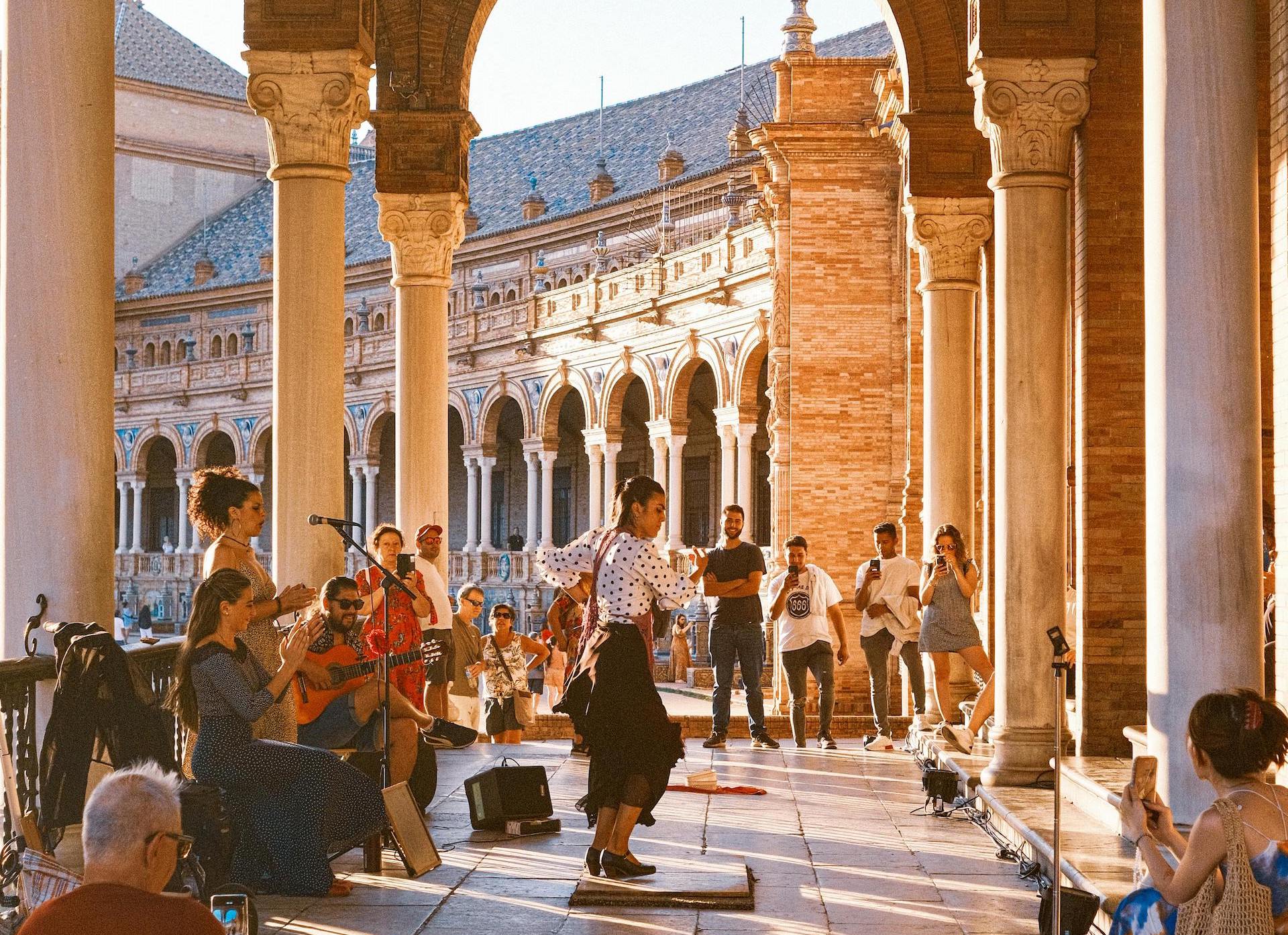You don’t find real flamenco on posters.
You hear it before you see it — drifting down alleyways in Jerez or crackling from a bar where the lights are too low and the furniture doesn’t match.
Tourists ask me where to find “authentic flamenco.” I usually smile, point them towards something decent, and keep the real answers to myself. Not out of snobbery — well, maybe a little — but mostly because real flamenco isn’t scheduled. It happens. Or it doesn’t. And trying to force it is the surest way to miss it.
There’s a tablao in Córdoba — I won’t name it — that doesn’t even have a sign outside. You have to know someone who knows someone. When you arrive, you knock twice on the door and say nothing. If the guitarist hears the rhythm in your knock, they open it. If not, you’re left in the street with the cats and your shame.
Inside: maybe a dozen people. Maybe two hundred. Depends on the night. Someone will sing something that makes the entire room forget their drink, their body, their mortgage. A dancer will stomp like she’s exorcising ghosts. And someone’s grandmother will get up to clap palmas with a timing that humbles the conservatory kids.
The show ends when it ends. No curtain. No encore. Just silence, a nod, and maybe a cigarette.
The Juerga That Changed Everything
The most unforgettable flamenco I’ve ever seen was at a beach bonfire near Cádiz.
It was August. Too hot for anything. I had wandered away from a noisy group of uni kids and found myself next to a group of older men with guitars. One of them was singing — raw, half drunk, voice like cracked leather. His friend was clapping in compás, dead steady. A young woman in cutoffs got up and started to dance alegrías like it was pouring out of her bones. Nobody announced anything. Nobody even looked surprised.
That’s a juerga.
It’s not a performance. It’s not a show. It’s flamenco with its hair down, singing to itself because it can’t help it.
You don’t get a ticket to a juerga. You get invited. Or you stumble into one because you got lost looking for a pharmacy and followed the sound of a cante jondo echoing off whitewashed walls.
What Makes These Moments Matter
It’s not about perfection.
Some of these hidden flamenco nights are sloppy, half-mumbled, fueled by wine and heartbreak.
But every single one has a pulse.
There’s a humility in these spaces. No ring lights. No stage makeup. Just a group of people with stories too heavy to carry quietly. When flamenco comes from there — from grief, joy, loss, defiance — it doesn’t care if your feet are pointing the right way. It cares if you’re telling the truth.
The Tourist Dilemma
I know I sound like a purist. But I also understand the irony: I teach flamenco. I perform it. I even post about it. I live with one foot in the raw and the other in the curated.
Still, I will always believe that flamenco thrives where no one’s watching.
So if you’re ever in Andalucía and someone invites you to a bar that doesn’t look like much, and someone else pulls a guitar from under the table, and a third person takes off her earrings and pushes back her hair — stay. Cancel your dinner reservation. Sit down. Be quiet. Let it happen.
Let’s not lose this.
The tablaos with no website.
The juergas with no setlist.
The strangers who become family by verse three of a seguiriyas.
This is the flamenco I love.
Let it stay wild.



